
2016 Silk Road International Exposition and the 20th Investment and Trade Forum for cooperation between East & West China were recently held in Xi’an city. Attracted by China’s “the Belt and Road” initiative (simplified as “B&R”), 37 countries along the Silk Road and other regions, 27 provincial and municipal delegations, including Fujian , Guangxi , Gansu and Xinjiang Autonomous Region, and over 20,000 domestic and overseas enterprises hope to match demands and explore commercial opportunities through platform of the said expo and forum. Several thousands of projects seek for investment with intended capital of over 1 trillion yuan. Various fields including infrastructure, energy and science & technology become the hotpot for cooperation.
Hotspot: thousands of projects seek for investment with proposed capital of over RMB1 trln
Journalist of Economic Information Daily found in the expo that besides exhibition stands from other countries, each province of China also closely combines their advantages with the theme of the Silk Road.
As the bridgehead of the Silk Road strategy, this expo attracts high attention of the western provinces. No matter the number of projects to be signed, or the amount of investment capital, all far surpass those of previous expos. Shaanxi provincial delegation prepared over 200 key projects, involving the total investment of 511.7 billion yuan. Additionally, delegations from each city of Shaanxi introduce over 1,500 investment promotion projects to the expo. For example, Shangluo municipal delegation determined 168 projects to be signed with 87,157 million yuan. The total figure from Gansu, Xinjiang and etc. exceeds 500, and the investment of key projects surpasses 500 billion yuan.
Besides the western provinces, those in the middle regions and coastal provinces in the east, including Jiangsu, Fujian and Shandong, have showed special enthusiasm in this expo. It is introduced that Jiangsu delegation proposed to sign over 200 projects, with over 40 billion yuan to invest key projects. Participants of Jiangsu delegation presented that they are likely to sign over 150 projects formally in the expo, and the project capital will exceed 29 billion yuan of last expo.
Domestic enterprises all key a close eye on the opportunities introduced by the “B&R”. Related officer in China Railway Construction Corporation Limited (601186.SH) told the journalist that the company had participated in crucial infrastructure projects of the countries along the Silk Road, such as East-to-West Expressway of Algeria and Garden Villa of Palm Island, UAE, accumulating rich cooperative experience. Along with the boosting “B&R” strategy, China Railway Construction will gain international cooperation opportunity.
Many countries along the Silk Road indicated that the “B&R” will provide developing opportunities for these countries. In this expo, Ministry of Trade, Industry and Energy of Korea especially held high-level economic & cooperative forum, and signed seven key projects involving five fields, such as equipment manufacturing, tourism, education, agriculture and biotechnology. The contracting capital surpasses 32 billion yuan.
Key point: huge cooperation potential in energy, infrastructure and science & technology
Journalist found in the interview that, along with promotion of the “B&R”, cooperation between Chinese enterprises and countries along the Silk Road are constantly deepening, especially with huge cooperative potential in energy, infrastructure and science & technology.
An enterprise from Astana, Kazakhstan brought in about 60 local projects, and searched for investment opportunities in the expo. Temir Assanov, a staff in the company, said that the projects are related to infrastructure construction of electric power, school, hospital and etc., with a series of preferential measures including tax exemption. They hoped to attract investment of Chinese enterprises.
Various participants from Central and Western Asia in the expo told the journalist that economy is not developed in the mention regions, but they are very rich in natural resources and energy; while China possesses rich experience in infrastructure construction, equipment manufacturing, energy & chemical engineering, metallurgy & spinning and etc. Through cooperation, the both parties can complement each other’s advantages to gain mutual benefits in the said fields.
The president of Chamber of Commerce and Industry (CCI), Kyrgyzstan indicated that Kyrgyzstan has favorable resources of energy, agriculture and mine, but lacks of necessary production capacity, so that it cannot carry out further processing for related industrial products. It hoped that Chinese enterprises can implement cooperation in mining, metallurgy & spinning, clean energy and etc.
The vice president of CCI, Uzbekistan also indicated that, in terms of infrastructure construction, countries along the Silk Road also need to reinforce the cooperation with China. He explained that many such countries now are very weak in field, especially the highway and railway, which has serious impact on connectivity between these countries and China, and blocks the economic and trade among the countries along the Silk Road.
A Korea emerging chemistry joint-stock company told the journalist that Korea enterprises can carry out convenient trade with most countries through maritime lines, but they need to build up convenient and effective infrastructures together with these countries to step into Eurasia interior.
Journalist found that these projects feature in three common characteristics: 1) massive capital, the total investment of a single project is usually over 50 million yuan; 2) projects starting the construction in the latest two years account for a certain proportion; 3) many fields are involved, such as infrastructure, energy development, economic & trade cooperation, agriculture and tourism, with infrastructure taking up for a highest proportion, and traffic infrastructure construction becomes the first priority. Based on current situation, domestic enthusiasm upsurges, and hotspot is likely to arouse in infrastructure of 1 trillion yuan.
Convenience: Customs clearance integration speeds up
Although economic ties among countries along the Silk Road have grown increasingly closer, their existing trade policies set an obstacle for any further economic cooperation. A number of participants and officials from central and west Asia said at the Expo that currently, countries along the Silk Road cannot act in unison in customs clearance, measuring and personnel exchanges for some policy reasons. So they can hardly facilitate their economic contacts to the maximum degree.
Convenience in customs clearance has always been a concern for countries along the Silk Road. The Expo will include a seminar to negotiate issues concerning international customs cooperation and convenient customs clearance. According to an informed source, countries along the Silk Road are pushing for customs clearance integration. If any progress is made, procedures for customs clearance in different provinces in China and in countries along the Silk Road will be greatly optimized. There will be a logistic channel that connects China to Japan, South Korean and Europe. This will significantly benefit the progress of the “Belt and Road” initiatives as well as the economic ties among countries along the Silk Road.
China began to allow enterprises to apply for customs clearance in places other than their registration places in the northeast from May 1, 2015. On the same day, Guangdong Province, which introduced the policy earlier, expanded it to the Pan-Pearl River Delta regions. Besides, Shandong, Henan, Shanxi, Shaanxi, Gansu, Ningxia, Qinghai, Xinjiang and Tibet also adopted the policy for the Silk Road Economic Belt.
China launched customs clearance integration in the Beijing-Tianjin-Hubei regions, the Yangtze River Economic Belt and Guangdong in 2014. Currently, there are five regions in China that are in the process of customs clearance integration, including the Beijing-Tianjin-Hubei regions, the Yangtze River Economic Belt, Guangdong, northeast China and the Silk Road Economic Belt. In particular, the Silk Road Economic Belt is the most wide-spreading, longest and diversified among these five regions.
Translated by Jelly Yi & Coral Zhong

















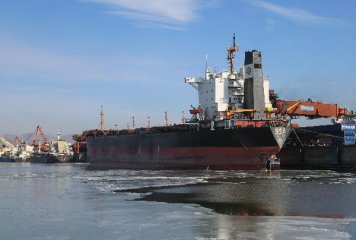
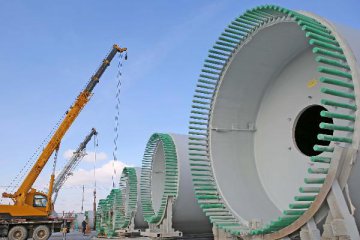
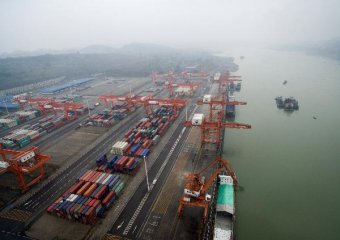
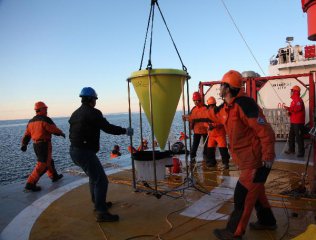
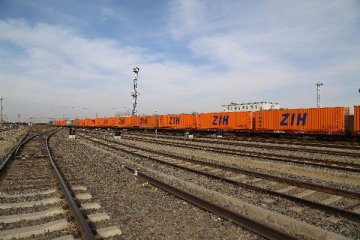


Latest comments